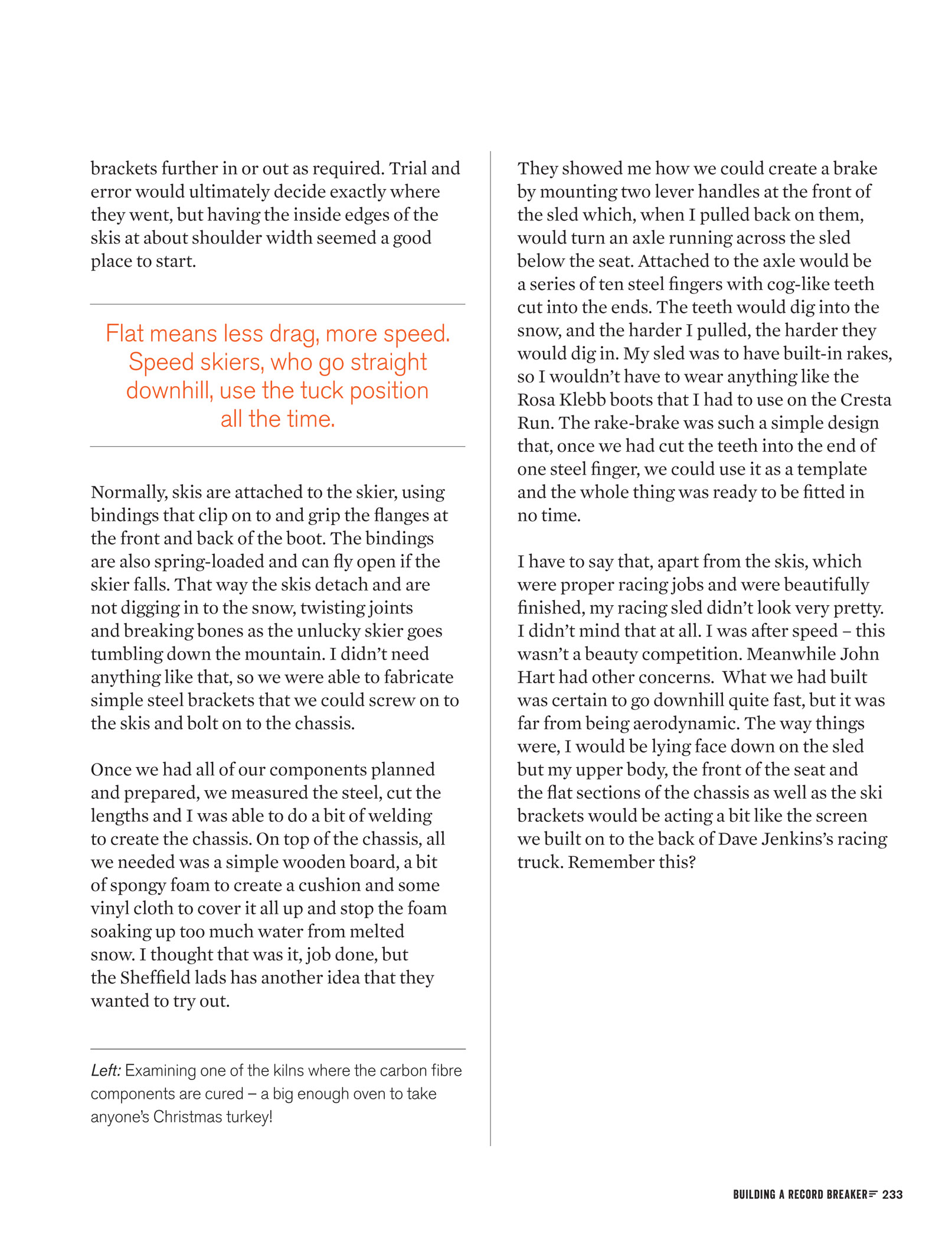
brackets further in or out as required. Trial and
error would ultimately decide exactly where
they went, but having the inside edges of the
skis at about shoulder width seemed a good
place to start.
Flat means less drag, more speed.
Speed skiers, who go straight
downhill, use the tuck position
all the time.
Normally, skis are attached to the skier, using
bindings that clip on to and grip the flanges at
the front and back of the boot. The bindings
are also spring-loaded and can fly open if the
skier falls. That way the skis detach and are
not digging in to the snow, twisting joints
and breaking bones as the unlucky skier goes
tumbling down the mountain. I didn’t need
anything like that, so we were able to fabricate
simple steel brackets that we could screw on to
the skis and bolt on to the chassis.
Once we had all of our components planned
and prepared, we measured the steel, cut the
lengths and I was able to do a bit of welding
to create the chassis. On top of the chassis, all
we needed was a simple wooden board, a bit
of spongy foam to create a cushion and some
vinyl cloth to cover it all up and stop the foam
soaking up too much water from melted
snow. I thought that was it, job done, but
the Sheffield lads has another idea that they
wanted to try out.
Left: Examining one of the kilns where the carbon fibre
components are cured – a big enough oven to take
anyone’s Christmas turkey!
components are cured – a big enough oven to take
anyone’s Christmas turkey!
They showed me how we could create a brake
by mounting two lever handles at the front of
the sled which, when I pulled back on them,
would turn an axle running across the sled
below the seat. Attached to the axle would be
a series of ten steel fingers with cog-like teeth
cut into the ends. The teeth would dig into the
snow, and the harder I pulled, the harder they
would dig in. My sled was to have built-in rakes,
so I wouldn’t have to wear anything like the
Rosa Klebb boots that I had to use on the Cresta
Run. The rake-brake was such a simple design
that, once we had cut the teeth into the end of
one steel finger, we could use it as a template
and the whole thing was ready to be fitted in
no time.
I have to say that, apart from the skis, which
were proper racing jobs and were beautifully
finished, my racing sled didn’t look very pretty.
I didn’t mind that at all. I was after speed – this
wasn’t a beauty competition. Meanwhile John
Hart had other concerns. What we had built
was certain to go downhill quite fast, but it was
far from being aerodynamic. The way things
were, I would be lying face down on the sled
but my upper body, the front of the seat and
the flat sections of the chassis as well as the ski
brackets would be acting a bit like the screen
we built on to the back of Dave Jenkins’s racing
truck. Remember this?
building a record breaker 233